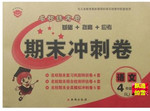题目内容
【题目】阅读下面材料,在空白处填入适当的内容(1个单词)或括号内单词的正确形式。
Aesop (伊索) was a slave living around 550 BC. We call the stories he wrote fables, as every story has a moral. Almost all the fables he wrote are ___【1】__ (humor) and entertaining, appealing to people __【2】___ all ages. Till now, Aesop’s fables __【3】___ (translate) into many languages and are known all over the world. Not only _【4】__ the fables themselves lived for nearly 1500 years, but the __【5】___ (express) from them have entered various languages.
One fable, for instance, is about a farmer who was driving his cart along a country road. The cart got __【6】__ (stick) in the mud, but the farmer made _【7】__ effort to get it out. Instead, he began to pray to the gods for help. The god Hercules finally appeared and told ___【8】__ man to get busy and push ___【9】__. “Push your shoulder to the wheel.” Hercules advised.
The moral of the story is clear. We mustn’t rely on others for help. Another saying which has come from the fable is “God helps those __【10】__ help themselves.”
【答案】
【1】humorous
【2】of
【3】have been translated
【4】have
【5】expressions
【6】stuck
【7】no
【8】the
【9】it
【10】who
【解析】
试题分析:本文介绍有关伊索寓言的故事。
【1】humorous 考查词形转换。根据were,和entertaining, appealing可知本空需要填形容词。故答案为humorous/ humourous。
【2】of考查介词。of+名词可以表示所修饰的词所具有的特征。“people of all ages”各个年龄阶层的人。故答案为of。
【3】have been translated 考查谓语动词的时态和语态。根据时间状语“to date”至今为止,可知本空用现在完成时。主语“寓言”和动词“翻译”之间是被动关系。所以用被动语态。故答案为have been translated。
【4】have考查倒装中的助动词。not only放于句首时,句子需要部分倒装。即把助动词提到主语前。根据but also后的句子是现在完成时,所以此处填现在完成时的助动词。故答案为have。
【5】expressions考查词形转换。句意“不仅寓言本身存在了近1500年,而且里面的表达也进入到别的语言中。”故答案为expressions。
【6】stuck考查固定表达。get/be stuck in被卡住,被困住。此处指车被困在泥里。故答案为stuck。
【7】no考查上下文逻辑。句意“那个农夫没有努力把车从泥里拉出来,而是祈求上帝帮忙。”故答案为no/little。
【8】the考查冠词。前面提到过那个农夫,此处再出现应该特指。故答案为the。
【9】it考查代词。此处需要一个代词代替前面的cart。故答案为it。
【10】who考查定语从句的关系词。定语从句的先行词是those,指代人,而且在从句中做主语。句意“自助者天助也。”故答案为who。
【知识拓展】
部分倒装
1、含有否定意义的副词位于句首时的倒装:
在正式文体中,never, seldom, rarely, little, hardly, scarcely, no sooner, no longer, nowhere等含有否定意义的副词若位于句首,则其后要用部分倒装:
如:I shall never forgive him./ Never shall I forgive him. 我永远不会宽恕他。
注:(1)对于not…until句型,当not until…位于句首时,其后的主句要用倒装语序:
如:He didn't leave the room until the rain stopped./Not until the rain stopped did he leave the room. 雨停了之后他才离开这房间。
(2)某些起副词作用的介词短语,由于含有否定词,若位于句首,其后要用部分倒装:
如:On no accounts must this switch be touched. 这个开关是绝不能触摸的。
2、“only+状语”位于句首时的倒装:
当一个状语受副词only的修饰且置于句首时,其后用部分倒装语序:
如:Only then did he realize that he was wrong. 到那时他才意识到他错了。
3、“so+形容词或副词”位于句首时的倒装:
副词so后接形容词或副词位于句首时,其后用部分倒装:
如:So cold was the weather that we had to stay at home. 天气太冷,我们只好呆在家里。
4、“So+助动词+主语”倒装:
当要表示前面提出的某一肯定的情况也同样适合于后者,通常就要用“So+助动词+主语”这种倒装结构:
如:You are young and so am I. 你年轻,我也年轻。
注:(1)若前面提出某一否定的情况,要表示后者也属于同样的否定情况,则应将其中的so改为neither或nor:
如:You aren't young and neither am I. 你不年轻,我也不年轻。
(2)注意该结构与表示强调或同意的“so+主语+特殊动词”结构的区别:
如:"It was cold yesterday." "So it was."“昨天很冷。”“的确很冷。”
5、由not only…but also引出的倒装:
当not only…but also位于句首引出句子时,not only后的句子通常用部分倒装形式:
如:Not only is he a teacher, but he is also a poet. 他不仅是一位教师,而且是一位诗人。
6、虚拟条件句省略if后构成的倒装:
当if引导的虚拟条件从句中含有had, were, should等时,如将if省略,则要将had, were, should等移到主语前,构成倒装句:
如:Had you come yesterday, you would have seen him. 若你昨天来,你就会见到他了。

 名校练考卷期末冲刺卷系列答案
名校练考卷期末冲刺卷系列答案